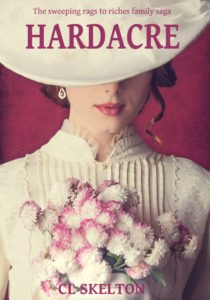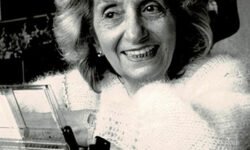The fascinating life of Hardacre author CL Skelton
 Hardacre is the sweeping rags to riches story of the Hardacre family. It follows generations of the Hardacres from Victorian times to the 1950s, and their rise from humble beginnings to a position of great wealth.
Hardacre is the sweeping rags to riches story of the Hardacre family. It follows generations of the Hardacres from Victorian times to the 1950s, and their rise from humble beginnings to a position of great wealth.
Young Joe Hardacre is as ambitious as his self-made father, Sam. Always with an eye on an opportunity, Joe sees the threat of war in Europe as a chance for further riches, and plans to build a ‘flying machine’ which can also carry cameras and take maps.
Joe’s scheme was no doubt inspired by the real-life experiences of CL (‘Clem’) Skelton, the author of Hardacre. In 1938, he could see that war was coming and joined the RAF. Clem loved flying, saying ‘the only downside was being shot at,’ but many years after the war he would still have nightmares about jumping out of a burning plane. He was a Spitfire pilot in the Battle of Britain, and later flew unarmed, high-altitude reconnaissance ‘Spits’ fitted with cameras instead of guns.
After the war, Clem returned to his earlier career, as an actor. He played opposite Brian Rix in the West End, and with the Viking Players in Scarborough, enjoying the itinerant life of weekly rep. The photographic skills he learned in the RAF were put to good effect in film, and he was at home on either side of the camera, in his varied career, in post-war London, and beyond.
At the age of 37, Clem entered a Roman Catholic religious order, The Society of St Paul. He stayed for seven years, despite never taking his final vows. The Society was active in publishing and film-making, and Clem made films for them. During that time, he met the publisher, adventurer, and Member of Parliament, David James of Torosay Castle on Mull. Among his many interests, James had grown intrigued by the Loch Ness Monster and founded the ‘Loch Ness Phenomena Investigation Bureau’ to try and catch ‘Nessie’ on film. He took Clem along on the first ‘expedition’ because of his camera skills.
The Nessie project grew, even as Nessie remained tantalizingly elusive. Eventually, Clem became a full time employee of the Bureau, living permanently on the camera site, in a caravan on the Lochside, with a winter retreat in a local hotel. It was there, in 1966, that he found his future wife, Alison Scott, who was travelling the Highlands while a student at Edinburgh University. She walked into the hotel and Clem said ‘That’s the girl I’m going to marry’. At the time, he was 47 and Alison was 20.
 The couple met the US literary agent Henry Morrison through Alison’s brother, the writer Justin Scott. They became friends and were encouraged by Henry Morrison to write. For a time, Clem and Alison wrote Gothic novels together under the name of Abigail Clements. Later, it was Henry who suggested the idea to Clem to write the novel which became Hardacre.
The couple met the US literary agent Henry Morrison through Alison’s brother, the writer Justin Scott. They became friends and were encouraged by Henry Morrison to write. For a time, Clem and Alison wrote Gothic novels together under the name of Abigail Clements. Later, it was Henry who suggested the idea to Clem to write the novel which became Hardacre.
Alison describes Clem as ‘a storyteller, with a good sense of story. A group artist, who was happy to collaborate and had no ego about his writing. An actor through and through. He also had a good scientific mind, and if alive today, would have been an enthusiastic user of Twitter and Facebook.’



